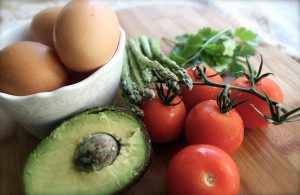Food Authenticity: A Novel Way To Fight With Global Issue Of Food Adulteration

Food fraud is a serious issue across the globe, driven by globalization, low probability and severity of punishment, and economic opportunity.
While food fraud is motivity by various factors, it is a serious health concern. Thus, verification of food fraud and food authenticity has gained new importance over the last few years. As per the Food Standards Agency (FSA), food fraud cost the food industry around $10-15 billion in the U.S. alone. Food fraud is a global issue and illnesses caused due to adulteration with harmful substances can lead the consumer to chronic diseases and even death.
According to Allied Market Research, the global food authenticity market is expected to reach $10.0 billion by 2030, growing at a CAGR of 6.9% from 2021 to 2030. Strict regulations regarding food fraud, surge in economically motivated adulterations (EMA) due to high competition among producers, and increase in instances of food debasement such as certification, false labeling, and adulterations.
Authenticity is no longer a buzzword. Food authenticity is the fastest-growing field due to a surge in public awareness about food safety and food quality. The emergence of novel techniques and analytical breakthroughs has made it simple to detect food fraud and deal with large data analytical needs in large quantities.
For some food companies, food authenticity is a pivotal component to gaining a larger consumer base who are conscious about what kind of food they consume and experience something “real”.
The purpose of authenticity testing is to assure the customer of the quality and true state of the food.
Furthermore, food authenticity is used for proving content of food products is truly authentic and the way they are represented. While food authenticity is not a new concept, it has gained new attention over the last few years owing to a drastic surge in food fraud incidents, especially during the Covid-19 pandemic.
While not all food adulteration happens intentionally. Some may happen due to cross-contamination in the field or due to malfunction in the manufacturing facility or along the supply chain.
However, some suppliers commit food fraud intentionally. For instance, marketing refined olive oil as extra virgin olive oil and blending it with cheaper oils such as corn, palm, and sunflower. Detecting such food frauds and ingredients used during adulteration is an age-old problem for regulators, consumers, and processors. The U.S. Food & Drug Administration (FDA) has launched a food defense program to protect food from such intentional adulteration and has encouraged food manufacturers to implement several food defense strategies.

Moreover, these are food authenticity testing companies that have dedicated food and feed authenticity testing laboratories to test ingredients for verification and adulteration detection.
With the help of such private companies and government agencies, experts analyze food and feed authenticity, deliver training and outreach programs in manufacturing facilities, and offer tools and resources to educate, respond, and prepare for the ongoing issue of food fraud.
Thanks to an increase in consumer awareness regarding the importance of food authenticity and the use of innovative tools and techniques, food authenticity has become a rapid process.
Moreover, the use of spectroscopic, advanced, non-destructive techniques and tools has made it easier to spot food fraud at an early stage.
Future Of Food Authenticity:
The demand for food authenticity will only increase in the future to fight against food fraud for the harm that it can do.
From early detection to prevention, food authenticity covers a lot of aspects in the food industry to have better control over food safety. Simultaneously, research and technological advances are revolutionizing the overall process of food authenticity.
However, there are still many challenges to identify all types of food fraud.
The boom of e-commerce and the complexity of the global market have made it difficult to decrease the risk of food fraud. In the future, companies, especially well-established brands would demand sensitive and accurate food authenticity methods to prevent food fraud from happening in the first place and improve its early detection. The real battle is that customers get what they pay for and food fraud is detected before such products hit the market.
For this, the industry players must keep pace with new fraud tricks and governments must impose strict punishment for food fraud as it threatens the very supply chain in the food industry that we utterly rely on.

Author Bio – Swamini Kulkarni, holds a bachelor’s degree in engineering and works as a content writer. She is deeply fascinated by technological advancements and the trending topic in the world. When she is not glued to the computer, she loves to read, travel, and spend time thinking about how she could read and travel more often.









